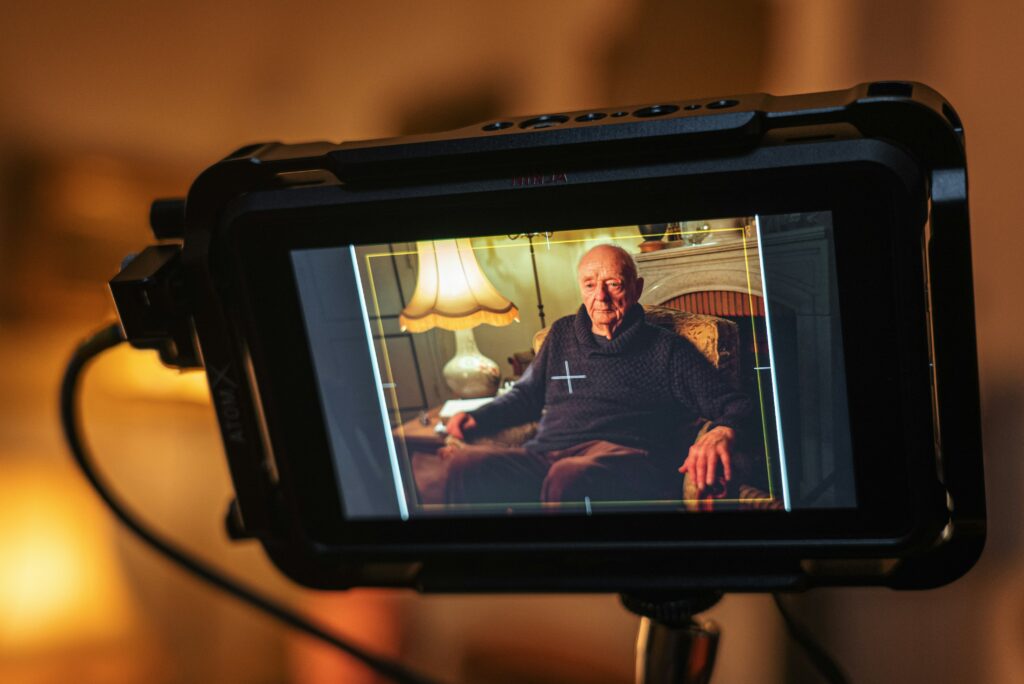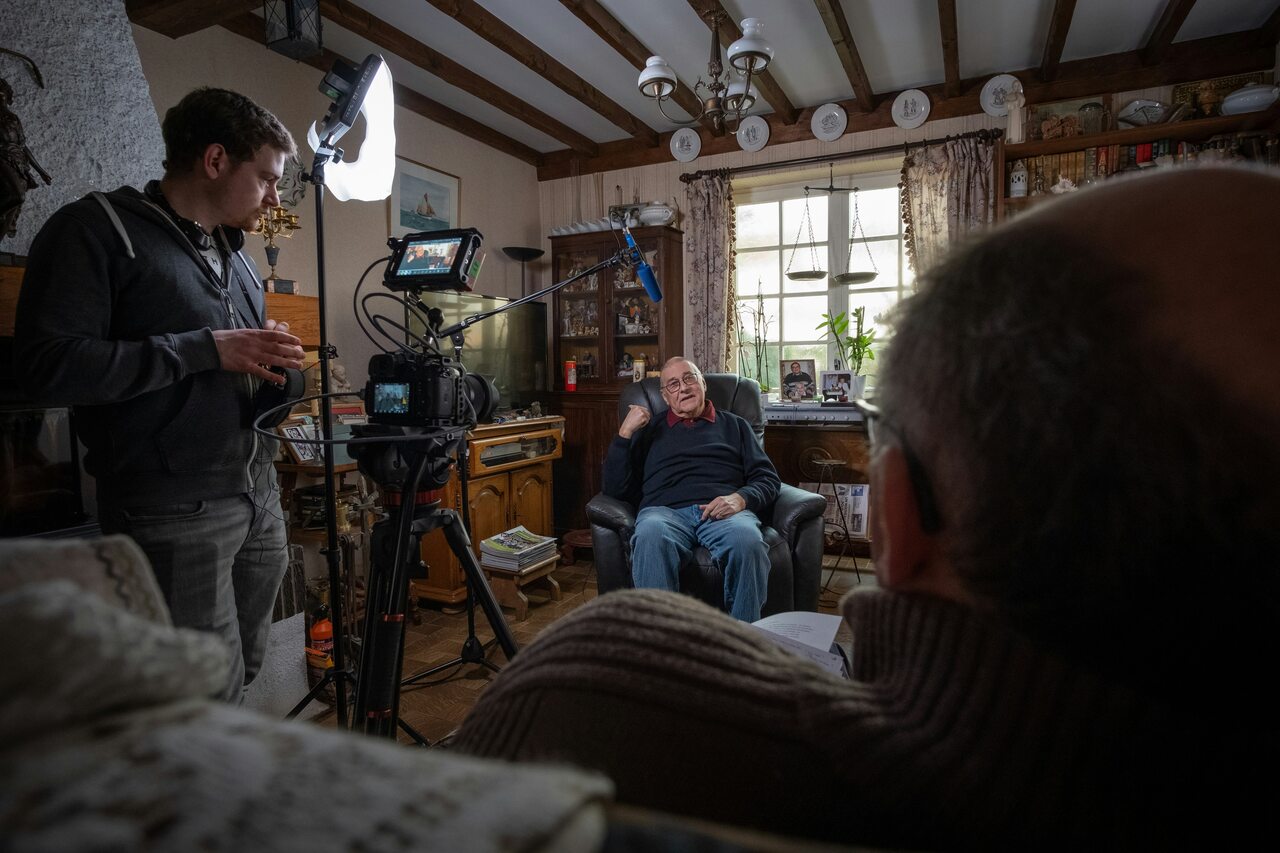Published on October 11, 2024
Learn 7 expert tips to create testimonial videos that build trust and drive conversions. Craft stories, show authenticity, and optimize for action
When it comes to healthcare, trust is everything. Patients don’t just want a doctor or clinic that “seems” good; they want one that has proven results and happy patients to back it up. That’s where testimonial videos come in.
They’re like a virtual handshake — building trust, showing real experiences, and proving your legitimacy. Especially in the medical world, where word of mouth can literally make or break your reputation, testimonials are gold.
Page content:
- Start with a Strong Narrative: Crafting a Story with a Testimonial Video that Resonates
- Highlight Authenticity: Ensuring Genuine Testimonials
- Keep it Concise: Avoiding Lengthy Videos
- Use High-Quality Production: The Impact of Professional Video Quality
- Optimize for Multiple Platforms: Ensuring Videos Work Across Social Media, Websites, Etc.
- Include a Clear Call to Action: Guiding Viewers to the Next Step
- Test and Analyze: Using Metrics to Measure Success
If you’re in healthcare marketing, it’s not just about having testimonial videos—it’s about having the right ones. In this article, we’ll walk through seven tips to make your testimonial videos shine, connect with future patients, and really drive home that trust factor.

Tip 1: Start with a Strong Narrative: Crafting a Story with a Testimonial Video that Resonates
First things first—people love stories. The best testimonial videos don’t just feature someone rattling off medical jargon or saying “everything was great.” No. You need a story — something that pulls at the heartstrings or at least hooks the viewer in.
Start by asking patients to share their journey.
What was their problem before they found you? How did your clinic or medical service help solve it? And what’s life like now? These three simple steps — problem, solution, outcome — are a storytelling classic for a reason. It works!
And, don’t be afraid to ask patients to share their emotions. “How did you feel when you were unsure about your diagnosis?” “What was it like after you saw results?” Viewers relate to feelings, not facts. A strong narrative is your ticket to getting viewers emotionally invested.
Tip 2: Highlight Authenticity: Ensuring Genuine Testimonial Videos
Let’s be real — people can smell a fake testimonial from a mile away. If a video feels too scripted or rehearsed, it’ll turn viewers off faster than you can say “cut.” Authenticity is the key ingredient to make your testimonial videos believable and trustworthy.
Here’s how you ensure that: let your patients speak in their own words. Sure, guide them with questions, but don’t feed them a script. The less “polished” they sound, the more relatable they’ll be. You want your patients to sound like… well, patients. Regular people with real experiences.
If possible, capture candid moments — whether it’s a laugh, a little pause to collect their thoughts, or a spontaneous smile. These human touches make the video feel real and help viewers connect.

Tip 3: Keep it Concise: Avoiding Lengthy Testimonial Videos
I get it — your patients have great stories to tell, and you want to show everything. But let’s face it: people’s attention spans these days are shorter than ever. When it comes to testimonial videos, less is more.
Aim to keep your videos around 60-90 seconds. Yes, that’s a challenge. But remember, the goal here isn’t to cram every detail of their experience into one video. It’s to highlight the most impactful moments — the ones that will resonate with future patients.
A concise video keeps your message focused and punchy. Plus, it makes the content easier to share on social media platforms, which favor shorter, bite-sized content. So, keep it short, sweet, and straight to the point.

Tip 4: Use High-Quality Production: The Impact of Professional Testimonial Video Quality
Now, let’s talk about production quality. In healthcare, first impressions matter. A shaky camera, poor lighting, or fuzzy audio can make even the best testimonial seem amateur. And when you’re trying to showcase the credibility of a medical practice, that’s not the look you want.
You don’t necessarily need a Hollywood-style production, but you do need professional-quality video. That means investing in good equipment or hiring a professional crew. Clean lighting, clear audio, and crisp visuals give your testimonial videos the polish they need to reflect well on your brand.
It’s a reflection of your professionalism as a healthcare provider. High-quality production says, “We care about the details.”
Tip 5: Optimize for Multiple Platforms: Ensuring Testimonial Videos Work Across Social Media, Websites, etc.
Here’s the thing: your testimonial video might be amazing, but it won’t matter if people can’t see it. In today’s world, people are viewing content on multiple platforms — Facebook, Instagram, YouTube, your website — so your video needs to look good everywhere.
Format your videos for different platforms. Vertical or square formats work better for social media, while a widescreen format is great for websites and YouTube. Also, consider adding subtitles — a lot of people watch videos on mute, especially on social media.
And don’t just post once and forget about it. Make sure your testimonial videos are easy to find—pin them to the top of your social media pages, embed them on your website’s homepage, and include them in email marketing campaigns.
Tip 6: Include a Clear Call to Action: Guiding Viewers to the Next Step
A great testimonial video should leave viewers with one clear thought: “I want that kind of result too!” But after you’ve hooked them, you need to tell them what to do next. That’s where a Call to Action (CTA) comes in.

At the end of the video, include a simple, clear message guiding viewers on the next step. This could be booking a consultation, visiting your website, or calling your office. Keep it direct, like, “Call us today to schedule your appointment” or “Visit our website to learn more.”
Your goal is to convert interest into action. A strong CTA turns viewers into patients.
Tip 7: Test and Analyze: Using Metrics to Measure Success
Lastly, don’t just put your testimonial video out there and hope for the best. Use metrics to see how well it’s performing. Track things like views, engagement (likes, comments, shares), and conversions (how many people called or scheduled appointments after watching).
This data is super valuable because it helps you understand what’s working and what’s not. Maybe viewers are dropping off after 30 seconds — time to shorten your next video. Or maybe one particular testimonial is driving tons of traffic to your website — figure out why and replicate that success.
Testing and analyzing your videos helps you fine-tune your strategy and improve future videos.
Conclusion: Recap and Encouragement to Implement the Tips
So, there you have it — seven solid tips to create testimonial videos that not only showcase your healthcare practice but also build trust with potential patients. Start with a strong story, make sure it’s authentic, keep it short, invest in quality production, optimize for different platforms, include a clear call to action, and don’t forget to analyze the results.
By applying these testimonial video hacks, your patient testimonials won’t just be another video online — they’ll be a powerful tool in growing your medical practice and proving your credibility. Now, go out there and start filming!





